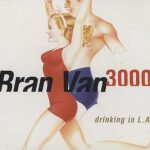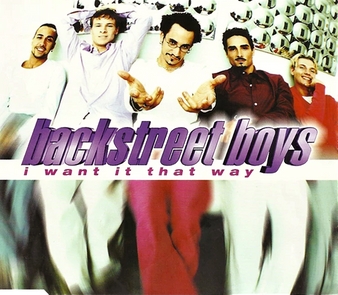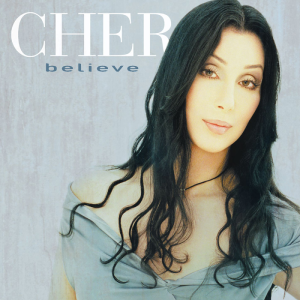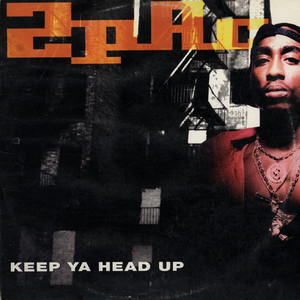 Bran Van 3000’s “Drinking in L.A.,” released in 1997 as part of their debut album Glee, remains one of the most distinctive and memorable tracks of the late 1990s. Fusing elements of trip-hop, alternative rock, electronic music, and hip-hop, the song exemplifies the genre-blurring approach that defined much of the era’s experimental music landscape. With its surreal lyricism, hypnotic rhythm, and eclectic instrumentation, “Drinking in L.A.” captures a sense of urban alienation, existential reflection, and ironic celebration, transforming what could have been a simple tale of indulgence into a multi-layered narrative that resonates with audiences across decades. Its blend of humor, melancholy, and introspection makes it a defining track for Bran Van 3000, cementing their place in the pantheon of innovative 1990s acts.
Bran Van 3000’s “Drinking in L.A.,” released in 1997 as part of their debut album Glee, remains one of the most distinctive and memorable tracks of the late 1990s. Fusing elements of trip-hop, alternative rock, electronic music, and hip-hop, the song exemplifies the genre-blurring approach that defined much of the era’s experimental music landscape. With its surreal lyricism, hypnotic rhythm, and eclectic instrumentation, “Drinking in L.A.” captures a sense of urban alienation, existential reflection, and ironic celebration, transforming what could have been a simple tale of indulgence into a multi-layered narrative that resonates with audiences across decades. Its blend of humor, melancholy, and introspection makes it a defining track for Bran Van 3000, cementing their place in the pantheon of innovative 1990s acts.
Musically, “Drinking in L.A.” is immediately striking for its fusion of disparate elements into a coherent, engaging soundscape. The track opens with a looping, laid-back guitar riff layered with warm, atmospheric synth textures, creating a sonic environment that feels simultaneously relaxed and slightly disorienting. Drums enter with a steady, almost hypnotic rhythm, underscoring the song’s reflective tone while driving it forward. The arrangement is fluid and dynamic, allowing space for the vocals, samples, and instrumental flourishes to coexist without overwhelming one another. This balance reflects Bran Van 3000’s mastery of genre fusion, blending electronic production techniques with organic instrumentation to create a sound that is uniquely their own.
Vocal performance on “Drinking in L.A.” is as eclectic as the instrumentation. James Di Salvio delivers a half-spoken, half-sung vocal that is at once intimate, ironic, and confessional. His phrasing captures the sense of wandering thought and internal monologue that defines the song’s narrative, creating a feeling of both immediacy and detachment. Guest vocalists and background harmonies add texture and depth, providing contrast to Di Salvio’s more conversational delivery and enhancing the track’s dreamlike quality. The vocal arrangement reinforces the song’s thematic tension between celebration and alienation, capturing the paradoxical nature of indulgence and reflection in a city defined by excess.
Lyrically, “Drinking in L.A.” is deceptively simple yet profoundly reflective, exploring themes of disillusionment, self-awareness, and the search for meaning amidst the chaos of urban life. The recurring refrain, “I didn’t know that I was lonely / I didn’t know that I was free,” encapsulates the song’s existential undertone, revealing a narrator who is both adrift and awakening to personal truths. The narrative unfolds as a series of observations and confessions, blending humor, irony, and vulnerability. Lines referencing the city, alcohol, and fleeting encounters create a vivid sense of place while also serving as metaphors for broader emotional and psychological states. The song captures the paradox of urban life: the simultaneous allure and emptiness of a city like Los Angeles, where opportunity and superficiality coexist in a constant, sometimes dizzying tension.
The chorus functions as both a musical and thematic anchor. Its repeated phrasing, combined with melodic harmonies and rhythmic propulsion, creates a sense of hypnotic inevitability, echoing the cyclical patterns of indulgence and introspection that the lyrics describe. The chorus’ simplicity belies its emotional complexity, inviting listeners to reflect on their own experiences of alienation, desire, and self-discovery. Its memorable melodic contour, combined with the textural layering of instruments and samples, ensures the song’s enduring appeal and accessibility.
Production on “Drinking in L.A.” is a masterclass in 1990s electronic and alternative experimentation. The track seamlessly blends live instrumentation, programmed beats, sampling, and layered effects to create a rich, immersive sonic environment. The mix emphasizes clarity while maintaining a sense of organic spontaneity, allowing each element to contribute to the overall texture without overpowering the others. Synth textures float above the rhythmic foundation, while subtle electronic manipulations add depth and unpredictability. This careful attention to production detail enhances the song’s dreamlike atmosphere, reinforcing the sense of wandering thought and surreal observation conveyed by the lyrics.
“Drinking in L.A.” also reflects broader cultural and musical trends of the late 1990s. At a time when trip-hop, electronic music, and genre fusion were gaining mainstream attention, Bran Van 3000 pushed the boundaries of conventional pop and rock structures. The track’s eclectic approach, combining introspective lyrics, hypnotic grooves, and experimental production, positioned it within a growing movement of artists challenging traditional categorizations. Its success, both commercially and critically, demonstrated the appetite for music that was intellectually engaging, emotionally resonant, and sonically adventurous.
The music video for “Drinking in L.A.” amplifies the song’s surreal and ironic tone. Featuring abstract visuals, urban landscapes, and fragmented narratives, the video mirrors the song’s themes of dislocation, self-reflection, and ironic celebration. The visual style emphasizes a dreamlike quality, employing color shifts, layered imagery, and unconventional editing to create a sense of temporal and spatial disorientation. This approach complements the track’s eclectic sound and confessional lyricism, creating a holistic audiovisual experience that deepens the song’s impact and reinforces its thematic resonance.
Live performances of “Drinking in L.A.” highlight the band’s ability to translate studio experimentation into dynamic, engaging stage experiences. Bran Van 3000’s multi-member configuration allows for intricate interplay between vocals, instruments, and electronic elements, ensuring that each performance captures the textural richness and emotional complexity of the recorded track. Audience engagement often mirrors the song’s reflective yet celebratory tone, with listeners responding to its hypnotic grooves and confessional lyrics in ways that blur the line between performer and spectator. These live interpretations reinforce the track’s status as both a personal and communal experience, highlighting its enduring relevance and emotional resonance.
Instrumentally, “Drinking in L.A.” is notable for its intricate layering and textural interplay. Guitar riffs float above synth pads, creating a sense of movement and space, while bass lines anchor the track and provide subtle melodic counterpoints. Percussion, both acoustic and electronic, drives the rhythm forward with hypnotic steadiness, emphasizing the cyclical, introspective nature of the song. Sampling and atmospheric effects punctuate the arrangement, adding depth and nuance without detracting from the core melodic and rhythmic structures. This careful orchestration ensures that the song maintains listener interest over repeated plays, revealing new details and textures with each listen.
The song’s lyrics, while rooted in specific observations of Los Angeles nightlife and personal experience, resonate on a universal level. Themes of isolation, self-discovery, and the tension between indulgence and reflection are widely relatable, allowing listeners to project their own experiences onto the narrative. The track’s blend of humor, irony, and vulnerability creates a compelling emotional landscape, demonstrating the power of pop and alternative music to explore complex psychological and social realities. The confessional quality of the vocals, combined with the hypnotic instrumentation, invites listeners to inhabit the narrator’s perspective while also reflecting on their own lives.
“Drinking in L.A.” also represents a milestone in Bran Van 3000’s artistic development. As part of their debut album, the track showcases the band’s willingness to experiment with genre, form, and production techniques. Its success helped establish Bran Van 3000 as a unique voice within the 1990s music scene, capable of blending intellectual depth, emotional resonance, and commercial accessibility. The track’s eclectic approach foreshadowed later developments in electronic-infused pop, trip-hop, and alternative music, marking it as a seminal work within the broader trajectory of late-20th-century music experimentation.
The track’s instrumentation is notable for its balance and clarity. Each element, from guitar to synth to percussion, is given space to contribute to the overall texture, creating a cohesive yet dynamic sonic environment. The interplay between live and electronic elements enhances the sense of unpredictability and movement, reflecting the song’s themes of dislocation, introspection, and ironic celebration. This careful attention to arrangement ensures that “Drinking in L.A.” remains engaging and compelling, even decades after its initial release.
Culturally, the song resonates as a meditation on urban life, fame, and the paradoxes of indulgence. Its narrative of wandering, drinking, and existential reflection captures the allure and alienation of Los Angeles, while also serving as a broader metaphor for the search for meaning and identity in a fast-paced, image-driven society. The track’s combination of humor, irony, and emotional honesty allows it to speak to listeners across generations, maintaining its relevance and appeal long after its initial release.
Ultimately, Drinking in L.A. by Bran Van 3000 is a masterful blend of sonic experimentation, lyrical depth, and emotional resonance. Its eclectic instrumentation, hypnotic rhythm, and confessional lyricism create a track that is both immediately engaging and endlessly rewarding, offering listeners a journey through the paradoxes of urban life, personal reflection, and ironic celebration. The song exemplifies Bran Van 3000’s ability to merge diverse musical influences into a cohesive and compelling work, making it a defining track of the 1990s and a lasting influence on alternative and electronic-infused pop music.
From the first looping guitar riff to the final ethereal fade, “Drinking in L.A.” captures the contradictions of human experience—joy and melancholy, freedom and alienation, indulgence and introspection. Its fusion of genres, textures, and lyrical insight ensures that it continues to captivate audiences, while its cultural and emotional resonance solidifies its place as a classic of late-20th-century music. The track’s enduring appeal lies in its ability to simultaneously entertain, provoke thought, and evoke emotion, making Drinking in L.A. a timeless exploration of the human condition and the surreal landscape of the city of angels.


